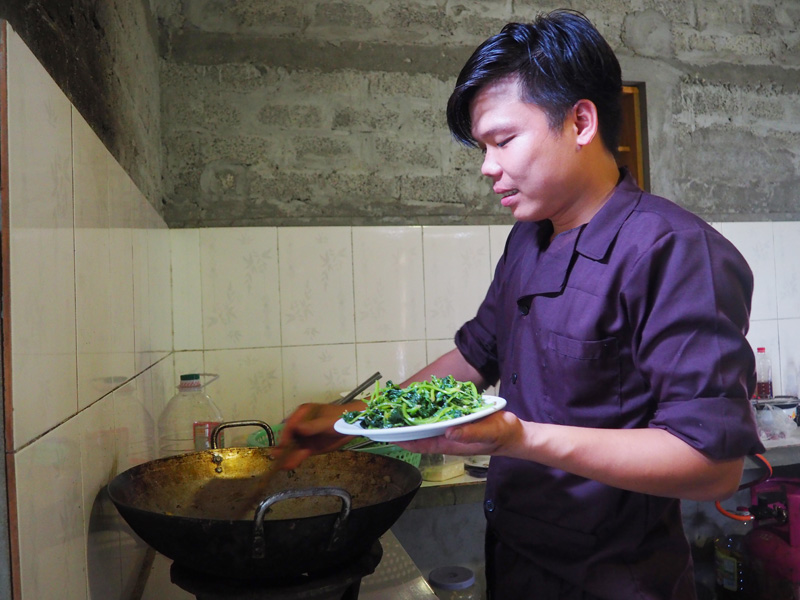



Dinh Quy Huu cooks dishes
for guests staying at Huu Thao homestay in Ke hamlet, Hien Luong commune (Da
Bac district).
In April 2014, representatives
of a project sponsored by the Australian Foundation for the Peoples of Asia and
the Pacific (AFAP) conducted a field trip to explore Ke hamlet in Hien Luong
commune, Huu said.
"The hamlet boasts all needed
factors to develop tourism, including nature, people and Muong ethnic group’s
cultural identity. I am fortunate to be among two households in the hamlet that
received support from the project to borrow loans, participate in training and
buy tourism equipment”.
In early 2015, after
nearly six months of preparation, homestay facility of Huu’s family was
officially inaugurated with the name of Huu Thao homestay.
To attract more tourists
to visit and stay at his home, Huu has actively joined in training courses held
by the project to improve his guest-serving skills. Aside from traditional
dishes like steamed and grilled fish, Huu also learnt to make various new
dishes that are suitable with domestic and foreign visitors.
Besides, guests of Huu
Thao homestay are enabled to participate in raft-rowing and kayaking,
sight-seeing on Da river and swimming at local springs. Especially, tourists can
join local people to make traditional cakes, catch fresh-water snails and pick
bamboo shoots.
In addition, Huu learned
additional services in Sa Pa to create more tourism products for visitors,
including herbal bath of Red Dao ethnic group and foot bath with medicinal
herbs. After using those services, many visitors feel more relaxed and less
tired.
With the aim of maintaining
the tradition, he and other members of the family decided to wear traditional
clothes when receiving guests. Additionally, on Saturday evenings, his family
invites the hamlet’s art troupe to entertain tourists with gong beating
performance, bamboo pole and fan dances, among others. Domestic and foreign
tourists find it enjoyable to experience and explore customs and cultural
identity of the ethnic group. Therefore, many of them returned here to further
explore the pristine land.
Since 2016, Huu’s homestay
estblishment has received more than 300 guests, with foreign tourists
accounting over 20 percent. It costs each visitor about 500,000 VND (22 USD)
per day for meals and accommodation at the homestay establishment (price of
recreational activities not included). Realising the economic efficiency of
homestay services, his family decided to build another stilt house to serve
more visitors./.